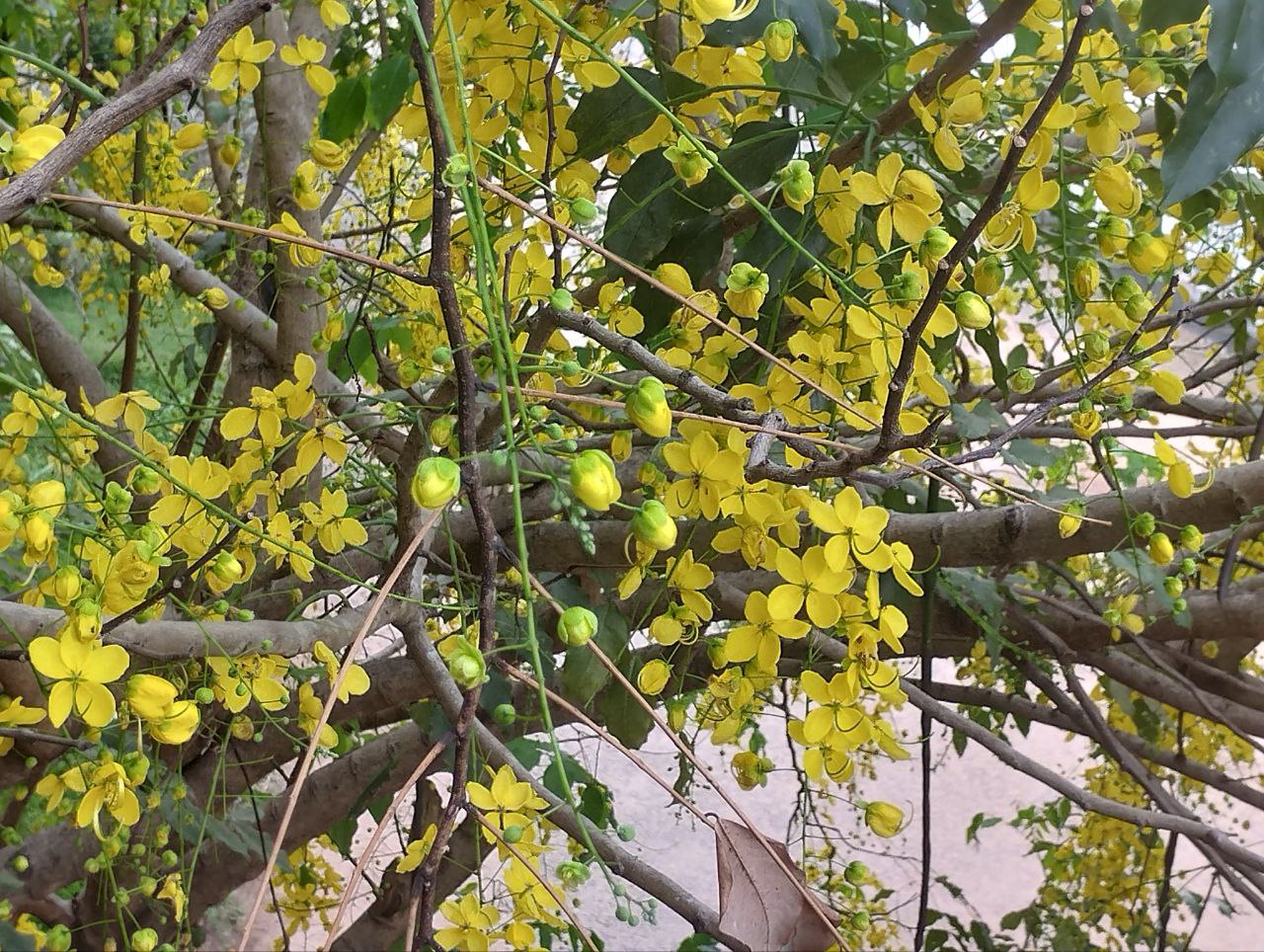I often lose track of time. The pace of modern life is such. Sometimes days go by in such a blur, I have to check the calendar – What day is it exactly? Which month are we in? How long until the balmy summer gives way to cool rains? When will winter come? These are the times I take a peek out of the window and remind myself – the answers are out there.
Inside your house, there is a calendar and a clock that reliably track the days and months. Outside your house is a host of trees that you can read much like a clock or a calendar. Many trees and their surroundings sport particular characteristics for a particular time of day or season.
The Rain Tree (Samanea saman) is a grand fixture of many urban streets and parks in India. A dark outer bark, almost black, with fine leaf segments, it is easy to identify when in bloom with its white and pink powder puff-like flowers. While its flowers can bloom year-round, the leaves have a peculiar habit. The leaves fold up and slightly droop at dusk, or even when rain clouds gather and dim the sunlight – the former phenomenon also lends the name “five o’clock tree”. However, it is not just the external stimuli driving this process; the rain tree also folds and unfolds its leaves in the absence of light regular 12-hour cycles. How these trees read the time is still a mystery being uncovered, but this circadian rhythm of the rain tree is a sight to behold.
Another tree that catches the eye with the flush of bright yellow flowers is Cassia fistula, commonly known as Golden Shower or Indian Laburnum. For many, it symbolises the onset of summer in the subcontinent. In the state of Kerala, it is a part of the Vishu rituals. But for me, it has always been the tree that heralded the end of the school year in Pune. The rattling of the dried seed pods with the wind was a clarion call to children heading into their summer vacation.

Golden Shower or Indian Laburnum (Cassia fistula) with characteristic yellow blooms. Photo by Anisha Karnail.
Having lived in Bangalore for a couple of years, I now eagerly await the pink blossom season. Tabebuia rosea, also called Rosy Trumpet Tree or Pink Poui, is a familiar sight in parks and on roadsides. As February arrives, most trees shed their leaves completely. Then the mini-bouquets of pink flowers blossom on the naked branches. The lesser-admired cousin Tabebuia aurea, becomes a similar swell of yellow trumpets. This is a sight no different than the world-famous Cherry Blossoms (Prunus jamasakura) of Japan, which blossom usually in March when the spring temperatures are just right. These flowers often need a “Goldilocks zone” of climatic conditions, and their particular flowering times are being studied as indicators of climate change in the past and present.

Rosy Trumpet Tree (Tabebuia rosea) – The ‘Cherry Blossoms’ of Bangalore. Photo by Rudhya.
It is not merely the trees that one can observe in nature’s calendar, but also the creatures around them. Outside my balcony is a row of unassuming royal palm trees (Roystonea regia), upon which a sign of an incoming monsoon is the appearance of weaver bird nests. The Baya weaver males will take up this prime real estate on sturdy trees with plenty of construction material to appeal to the females’ discerning eyes.
Next time you feel the weary drag of time, take a look outside and remember how the trees were at that moment. The clock and the calendar of trees are drumming a steady beat. Nature has a way of grounding you in reality like nothing else. I am making a new calendar for myself – a calendar of trees – and I hope you also make one for yourself and renew your connection with your surroundings.
About the Author: Anisha Karnail is an aspiring ecologist and science communicator. She loves learning about plants, birds, butterflies (all creatures great and small, really) and is exploring her love for nature through writing and art.






Appreciate your writing .Keep it up
Beautifully written!